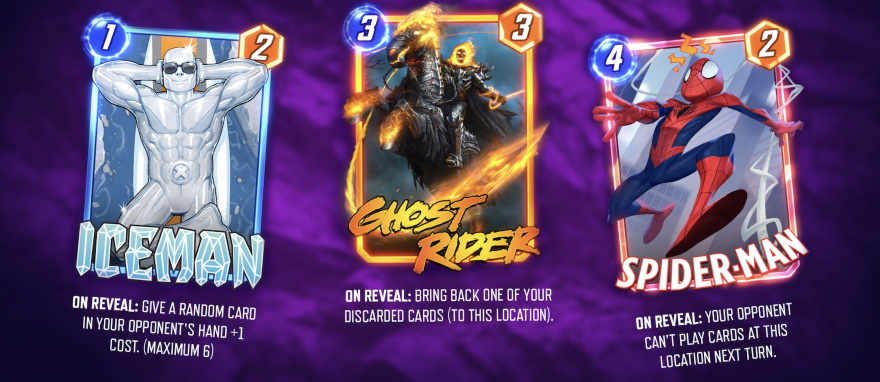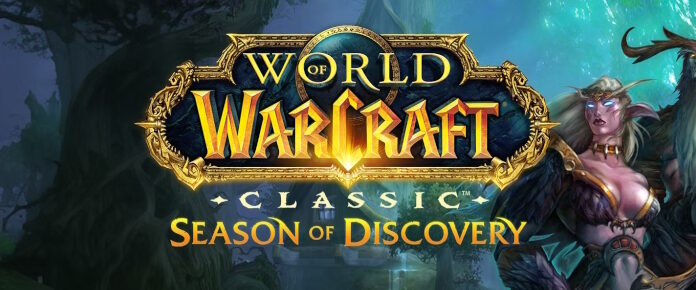
Feeling the effects of the “superhero movie fatigue syndrome” that’s going around these days, I wasn’t overly eager to check out Marvel Snap when it launched last month. Yet I kept hearing strong word-of-mouth saying that former Hearthstone director Ben Brode and his team kind of created a new spin on digital card battlers — and that it was something I needed to check out.
So I waited until I was on vacation this past week, away from computers and in need of something fun to fiddle with on my phone. That’s when I snap-crackle-and-popped into this title and found my new gaming addiction. Seriously, friends, I am hooked, and I am here to tell you all about it today.
Weirdly enough, describing how Marvel Snap works takes way longer than just picking it up and playing it yourself. It’s quite intuitive, and the simple and quick tutorial battles do a good job handing you the basics.
So what you need to understand is that unlike Magic the Gathering, Hearthstone, Runeterra, and countless other digital card games, Marvel Snap isn’t about tossing characters onto the field to directly fight each other. It’s more like an evolved form of Tic-Tac-Toe, Go, or even Connect Four in that you are trying to dominate the battlefield to win.
Each match of Marvel Snap takes place over six rounds, which will be about five minutes, more or less (so even if you lose, hey, you can jump quickly into a new bout). On turn one, you have one energy to spend; on turn two, two energy; and so on until turn six with six energy points.
Your goal over these six turns is to throw down cards from your customized 12-card deck in front of the three zones of play, with the hopes of controlling at least two of the zones by the end of turn six. The rule here is pretty simple: Whichever player has the most accumulated power in that zone has control over it. You mostly get power from the cards you put down, but each zone can only hold four cards on each side maximum.
Now there are all sorts of effects and synergies that your cards have, but what really makes Marvel Snap interesting is that the zones start activating special rules on turns one, two, and three. These rules range from the ridiculous (“Whichever player has the most cards in this zone gets +100 power”) to the diabolical (such as tossing five useless “Rock” cards into your deck) to the game-changing (“After turn 4, you can only put cards in this zone”).
Therefore a match requires you to be aware of the ever-shifting landscape and what cards you have on hand to be as strategic as possible. Do you try to dominate one zone early on or spread out your cards? Do you splurge on a lot of low-cost cards or save some heavy hitters for later?
There’s one more layer to the game that really ratchets up the tension: the titular “snap” ability. See, any given match is played for cubes (which advance your progress and unlock other cards and goodies). You win a match, you get two cubes. You lose, and you go down two cubes. If you think you’re going to lose, you can retreat early and only lose a single cube.
But if you’re feeling really confident in a win, you can click the “snap” button to double your own win or loss — and your opponent can as well. It’s kind of like playing poker, where you go “all in” as either a show of confidence or a supreme bluff. This either results in sweating out the final turns or retreating quickly. So far, I’ve had games end in snap-offs maybe one in four times.
What I hope I’m conveying is that this is a supremely well-designed game that’s easy to pick up and understand but will take a long time to become a true master of its strategy.
Now I know what you’re wondering, because it’s what I was curious about as well: What’s the business model? Is this pay to win? And to answer that, I’ll say that while there is some pay-to-advance on the battle pass, it feels very fair and mostly skewed toward cosmetics.
You see, you don’t level up cards in terms of their power or abilities. A default Spider-man card will play exactly the same as a guy who’s dumped a lot of effort into leveling it up. Rather, the appeal is improving the visuals, whether they be collecting variants, becoming 3-D, or even adding animations and special backs. The cards you play in your deck are the ones that get the most improvements, so you can really invest in the ones you like the best.
There are daily and weekly missions with their own free reward tracks, as well as an ongoing seasonal pass that offers some freebies and a lot of premium rewards. If you want to subscribe, it’ll cost you $10 for that pass, and I’m not sure how long it lasts. It does look like there are special cards tucked into the premium track, but are they exclusive? Again, no idea from my perspective.
I will say that none of this feels grindy, gross, or exploitive, which is what I like to see in any free-to-play product. I’ve already unlocked dozens of cards and have lots of options for my deck, all without paying a penny.
And I haven’t talked yet on the Marvel theme, which weirdly reminds me of Marvel Heroes more than the MCU movies. I guess it’s the fact that there’s a lot of attention paid to showing off different costumes and iterations of those characters, not to mention giving each card its own distinct font as though you’re looking at a comic book cover.
Another point in favor of this game is that it’s played in portrait mode and is incredibly easy on the eyes. I have an older phone which makes a lot of other card games kill my vision with teeny tiny text. Here, everything is crisp and big and easy to understand.
With bite-sized matches, fun theming, an inoffensive business model, and endless strategy, Marvel Snap gets a strong recommendation from me. Here’s hoping that the team can continue to refine, improve, and iterate in the same vein.

















